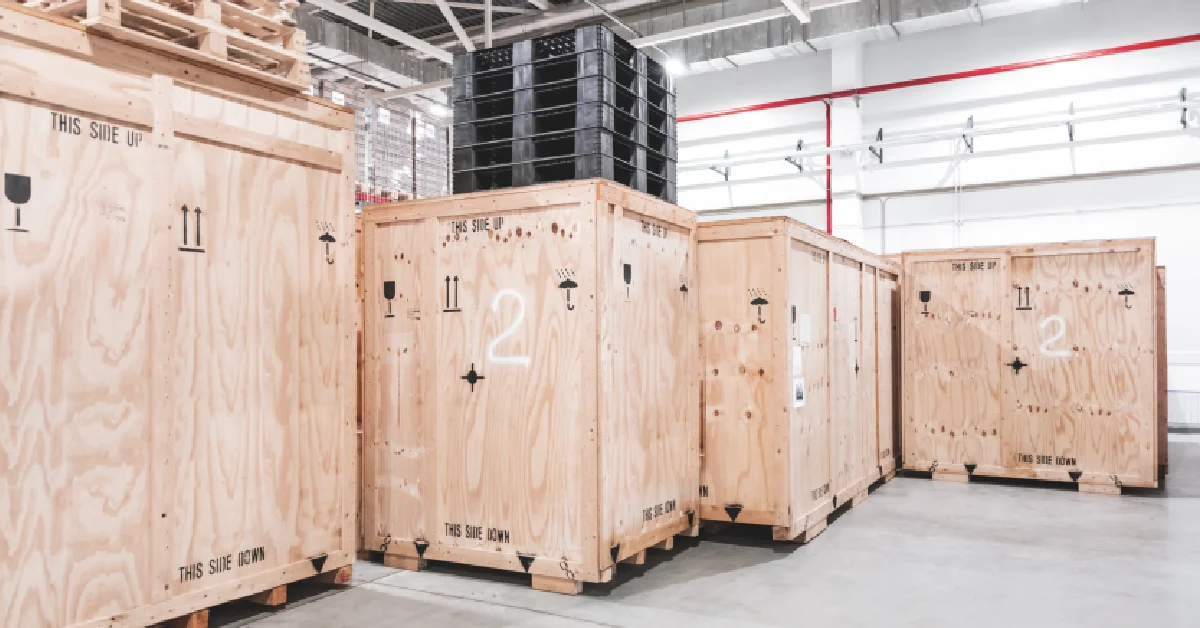Getting objects loaned from another museum or collecting institution for a specific exhibition or if you are doing the loaning is a exhaustive process for good reason. Much of our cultural property is damaged in transport in between institutions, so protection during loan outs is key. You are probably aware of a section of the loan agreement that revolves around fine art transport and another section that involves environmental monitoring. In this post, we will explore how these two relate to each other and how to best protect the object.
What is the role of environmental monitoring in fine art transport?
Environmental monitoring is a crucial aspect of fine art transport. It involves keeping a close eye on factors such as temperature, humidity, light, and vibrations, which could potentially damage artwork during transport.
Temperature and humidity changes can cause materials to expand or contract, leading to potential damage such as cracking, warping, or mold growth. Light, especially ultraviolet light, can cause fading or discoloration (See David Saunder’s book Museum Lighting: A Guide for Conservators and Curators for in-depth information on light). Shock and vibrations can lead to physical damage through different interactions from the moment the object is handled and packed, to the different types of shipment used to transport an object as it can be transported by land, air, and/or sea. (Read this example of vibration damage on pastel paintings).
When objects are sensitive to incorrect temperature or relative humidity, or if they are under risk of getting damaged by shock or vibration, it is not uncommon for collections care professionals to include data loggers in the packaging crates to maintain environmental monitoring readings throughout transport. This information can then be used to prove that loan conditions were met for both legal and insurance purposes. Furthermore, they give important information to improve packing and transport systems.
How does environmental monitoring inform decision-making in fine art transport?
Good environmental monitoring data will allow collections care professionals to make informed decisions regarding fine art transport. Accurate data on environmental conditions may guide the choice of packaging materials, the design of crates, and the selection of transportation methods.
For instance, if the artwork is sensitive to humidity fluctuations, professionals may choose to use materials like Tyvek and humidity absorbers or buffers such as Art Sorb to create a microclimate within the transport crate. In situations where vibration is a concern, they might opt for air-ride trucks, consider the use of vibration dampening systems, or even introduce some vibration limits.
Furthermore, monitoring the environment during transport helps in immediate decision-making. If an artwork is exposed to detrimental conditions, immediate action can be taken to mitigate the damage rather than finding out after the object has already been damaged by extended exposure.
What role does environmental monitoring play in object loans and insurance?
Environmental monitoring may also play an essential role in object loans and insurance. It not only provides assurance about the safe transport of the artwork but also validates the conditions under which the artwork was kept throughout the loan period. In some cases, it may also confirm (or disprove) conditions within environmentally controlled trucks as offered by fine art transport companies.
Insurance companies will also require evidence of appropriate environmental monitoring as part of risk assessments before objects go on loans. Maintaining accurate records of environmental conditions before, during and after fine art transport could therefore expedite insurance claims in case of damage. Remember that if damage occurs during fine art transport and is caused by environmental changes, you will have to be able to prove this to the insurance company. Having good environmental monitoring records will be an excellent source of data for your report.
Why should we monitor the environment during fine art transport?
When getting an object or artwork loan from an institution, it is customary for the borrower to assume all costs associated with transportation. These will include, but not be limited to, carrier costs, customs brokerage, freight forwarding, security, storage, travel between venues, couriering, insurance, etc.
Thus, the objects in transit have ample opportunity to incur damage at any point in this process. Should the damage be in any way related to the changes in the environment, it will be of the utmost importance that you, as the borrower, are able to prove it for insurance purposes.
Environmental monitoring during fine art transport is vital for ensuring transparency, building trust among institutions, and fulfilling insurance requirements – as well as giving you the peace of mind you need during a stressful transition.
If you’d like to read more, here are some useful resources to learn more about environmental monitoring and protection of objects during transport:
- Art in transit: Handbook for Packing and Transporting Paintings. Ed. Janice Gruver. 1997.
- Features of Effective Packaging and Transport for Artwork – Technical Bulletin 34. Canadian Conservation Institute. Paul Marcon.
- The National Park Service Museum Handbook includes detailed information on transportation and insurance among other topics.
- Protecting Three-Dimensional Museum Collections During Transport: Engineering and Evaluation of Transport Crates Featuring Wire-Rope Isolators for Improved Vibration Mitigation by Verena Kotonski. (This article is not open access, but you may be able to access it through your institution.)
- The Packing Museum Objects for Moving e-learning tool by the Museum of London has a short section on Risk Management in Transit.
And if you are looking for some sustainable options for packing paintings while preserving them, check out these companies:
If you have any questions about environmental monitoring, integrated pest management, or just want to talk about preventative conservation, please reach out to us! Don’t forget to check out our blog or join our community of collections care professionals where you can discuss hot topics, connect with other conservators or even take a course to get familiar with the Conserv platform.




